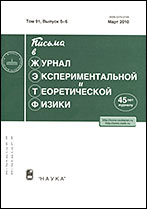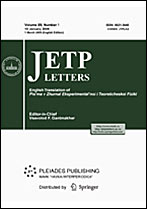|
This article is cited in 7 scientific papers (total in 7 papers)
CONDENSED MATTER
Allowable number of plasmons in nanoparticle
I. A. Fedorovab, V. M. Parfenyevac, S. S. Vergelesac, G. T. Tartakovskyd, A. K. Sarycheve
a Moscow Institute of Physics and Technology (State University), Dolgoprudny, Moscow region
b International Center for Quantum Optics and Quantum Technologies (the Russian Quantum Center), Moscow region, Skolkovo
c L. D. Landau Institute for Theoretical Physics, Russian Academy of Sciences
d Advanced Systems and Technologies
e Institute for Theoretical and Applied Electromagnetics, Russian Academy of Sciences, Moscow
Abstract:
We address thermal and strength phenomena occurring in metal
nanoparticles due to excitation of surface plasmons. The temperature of the
nanoparticle is found as a function of the plasmon population, allowing for
the Kapitza heat boundary resistance and temperature dependencies of the
host dielectric heat conductivity and the metal electrical conductivity.
The latter is shown to result in the positive thermal feedback which leads
to appearance of the maximum possible number of plasmon quanta in the
steady-state regime. In the pulsed regime the number of plasmon quanta is
shown to be restricted from above also by the ponderomotive forces, which
tend to deform the nanoparticle. Obtained results provide
instruments for the heat and strength management in the plasmonic
engineering.
Received: 02.09.2014
Revised: 17.09.2014
Citation:
I. A. Fedorov, V. M. Parfenyev, S. S. Vergeles, G. T. Tartakovsky, A. K. Sarychev, “Allowable number of plasmons in nanoparticle”, Pis'ma v Zh. Èksper. Teoret. Fiz., 100:8 (2014), 591–595; JETP Letters, 100:8 (2014), 530–534
Linking options:
https://www.mathnet.ru/eng/jetpl4447 https://www.mathnet.ru/eng/jetpl/v100/i8/p591
|


|





 Contact us:
Contact us: Terms of Use
Terms of Use
 Registration to the website
Registration to the website Logotypes
Logotypes








 Citation in format
Citation in format 
